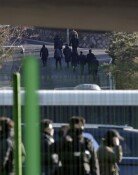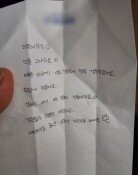Is a Fake 5,000 Won Bill Lurking in Your Wallet?
Is a Fake 5,000 Won Bill Lurking in Your Wallet?
Posted January. 31, 2005 23:16,
Not long ago, Kim (Shinwol 6-dong, Yangcheon-gu, Seoul), who is self-employed, felt something was wrong with one of his 5,000 won bills while he was counting bills in his wallet.
Kim instantly called the Bank of Korea (BOK) and reported, The bill feels too smooth, and the invisible portrait looks a little unusual. Investigator Han Min at the Bureau of Engraving and Printing of the BOK said, After checking the serial number, we found that Kims 5,000 banknote was the same type of phony bill as those that have been reported lately.
Han Min also gave a warning that counterfeit 5,000 won bills are being circulated in large quantities.
Do I Have Fake 5,000 notes in My Wallet?-
According to the BOK on January 31, the total number of counterfeit bills found in 2004 was 4,353, an 11.7 percent increase from the previous year. The dominations included 10,000 won, 5,000 won and 1,000 won bills. Compared to the figure (365) in 1988, the increase is 12-fold. In the case of 5,000 won notes, 987 counterfeits were found last year, a whopping 125.9 percent jump from the last year.
As of January 28 of this year, 786 phony banknotes were reported in total, and out of that number, 608 of them were 5,000 won bills, accounting for 77.4 percent.
The reasons more fake 5,000 won bills are being printed are that more sophisticated counterfeiting techniques are available these days and with less protective features, 5,000 won bills are easier to produce than 10,000 notes.
In particular, 다(sounds Da in Korean) 5,000 won bills, issued between 1983 and 2003, do not have a dotted silver thread in the middle, which make them an easier target for mass-counterfeiting. Out of 987 phony 5,000 won bills found last year, 다 5,000 won bills accounted for 814 of them (82.5 percent of the total).
라 (Sounds la in Korean) 5,000 bills, issued from 2002 onward, have the dotted silver thread. Proportionately, 다 5,000 bills make up about 30 percent of all used 5,000 won banknotes.
Kim Doo-gyoung, the chief of the Bureau of Engraving and Printing at the BOK said, The bank plans to reduce the number of circulated 다 5,000 bills as much as possible by destroying all of them that we receive.
How to Detect Counterfeit Notes-
First, examine the nearly invisible portrait on the front left corner. Counterfeit notes do not have the portrait or have a very crude one engraved by hand. Real bills, on the other hand, have a dotted silver thread in the middle, whereas the same line on fake ones could look black.
Also, all the letters and numbers on genuine notes stand out, which is instantly distinguished by touching the bill. However, phony bills are smooth because they are produced by color printers.
However, the BOK points out that the recently found bogus 5,000 won notes have the invisible portrait and were pressed for the distinguishable features that stand out. The counterfeiting methods have gotten sophisticated, making it hard to sort out fake money.
If one knowingly uses counterfeit money, he or she will be subject to imprisonment of up to two years or fines of up to five million won. Those who happen to receive counterfeit money must report their findings to the police or to a nearby financial institution.
Kang-Woon Lee kwoon90@donga.com







